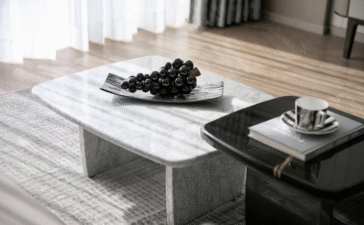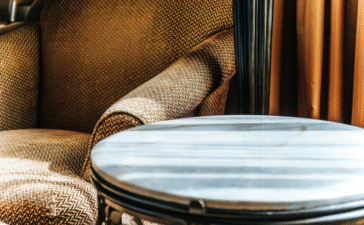Designing a small bathroom presents a unique challenge: how do you fit all the essentials without making the space feel cramped? Every square inch counts, and the right fixtures can make all the difference. A common roadblock is finding a vanity that offers sufficient storage and style without overwhelming the room. The solution often lies in a narrow bathroom vanity. These specialized fixtures are designed to maximize functionality in tight quarters. This guide will walk you through everything you need to know about choosing the perfect narrow bathroom vanity. We’ll cover different types, design ideas, top recommendations for 2025, and practical tips for installation and maintenance, helping you transform your small bathroom into a stylish and functional oasis.
What is a Narrow Bathroom Vanity?
A narrow bathroom vanity, sometimes called a compact vanity, is a cabinet and sink combination specifically designed with a shallower depth than standard models. While a traditional vanity might be 21 to 24 inches deep, a narrow vanity typically measures between 10 and 18 inches deep. This reduction in depth is the key feature that makes it a space-saving solution for powder rooms, guest bathrooms, or any area where floor space is at a premium. Its primary purpose is to provide essential sink and storage functions without impeding traffic flow, making the bathroom feel more open and accessible.
Why Choose a Narrow Bathroom Vanity?
The most significant benefit of choosing a narrow bathroom vanity is its ability to maximize small bathroom space. In a compact bathroom, every inch saved contributes to a more open and less cluttered environment. By opting for a slimmer profile, you can free up valuable floor area, making it easier to move around and creating the illusion of a larger room.
Beyond just saving space, these vanities offer efficient storage solutions. Manufacturers have developed creative designs that incorporate drawers, cabinets, and shelving into these compact units. This ensures you don’t have to sacrifice storage for size. You can keep your toiletries, towels, and cleaning supplies neatly organized, maintaining a tidy and stylish look without compromising on functionality.
Types of Narrow Bathroom Vanities
Narrow vanities come in various styles to suit different needs and design aesthetics. Understanding the different types can help you find the perfect fit for your space.
Single-Sink Narrow Bathroom Vanities
These are the most common type, featuring one sink basin. They are an excellent choice for solo bathrooms, guest baths, or small apartments where only one person will be using the sink at a time. They offer a simple, clean look while providing adequate functionality.
Corner Narrow Bathroom Vanities
A corner bathroom vanity is a brilliant solution for making the most of an awkward or unused corner. By fitting snugly into the corner, these units free up wall space and create a unique focal point in the room. They are particularly effective in small or irregularly shaped bathrooms.
Floating Narrow Bathroom Vanities
Also known as wall-mounted bathroom vanities, floating models are mounted directly to the wall, leaving open space underneath. This design creates a modern, airy feel and makes the bathroom appear larger by exposing more floor area. The space below can also be used for additional storage, like placing a basket for towels.
Vanities with Integrated Sinks
Many narrow vanities feature an integrated sink, where the countertop and sink are molded from a single piece of material. This seamless design is not only space-efficient but also incredibly easy to clean, as there are no seams or crevices where dirt and grime can accumulate.
Key Considerations When Choosing a Narrow Bathroom Vanity
Selecting the right vanity involves more than just picking a style. Here are some key factors to consider to ensure you make the best choice.
Space and Dimensions
Before you start shopping, carefully measure your bathroom. Note the available width, depth, and height for the vanity. Pay attention to the location of existing plumbing, door swings, and the toilet to ensure the vanity fits without causing obstructions. Accurate bathroom vanity dimensions are crucial for a successful installation.
Storage Options
Evaluate your storage needs. Do you need drawers for small items, or would open shelves for towels be more practical? Some narrow vanities offer a combination of cabinets and drawers. Think about what you need to store and choose a configuration that provides the most efficient storage for your lifestyle.
Style and Design
Your vanity should complement the overall decor of your bathroom. Whether your style is modern, rustic, traditional, or minimalist, there is a narrow vanity to match. Consider the finish, hardware, and overall shape. A sleek, white floating vanity can enhance a modern design, while a wood-finished model might fit perfectly in a rustic or farmhouse-style bathroom.
Material and Durability
Bathroom vanity materials vary widely, and each has its pros and cons. Solid wood is durable and timeless but can be expensive and susceptible to moisture. MDF (Medium-Density Fiberboard) is a budget-friendly option but less resistant to water damage. Plywood offers a good balance of durability and cost. For the countertop, options like ceramic, quartz, and cultured marble are popular for their durability and ease of maintenance.
Installation
Consider the ease of installation. Some vanities, particularly floating models, may require more complex installation and professional help. If you’re planning a DIY project, look for vanities that come with clear instructions and all the necessary hardware.
Top 5 Narrow Bathroom Vanities to Consider in 2025
To help you with your search, here are five of the best narrow bathroom vanities on the market, chosen for their style, functionality, and value.
- Wyndham Collection Soho Single Bathroom Vanity: This floating vanity is a top-rated choice for modern bathrooms. With a depth of 18 inches, it offers a sleek look with ample storage in its deep drawers. It comes with an integrated sink and is available in multiple finishes.
- Chans Furniture Abbeville Narrow Depth Vanity: For those who love a traditional look, this 16-inch deep vanity is a great option. Made from solid wood, it’s built to last and provides both cabinet and drawer storage.
- Fresca Lazzaro Wall-Hung Vanity: An affordable bathroom vanity that doesn’t skimp on style. At just 18.5 inches deep, this wall-mounted unit is perfect for contemporary spaces. Its simple design and multiple color options make it a versatile choice.
- Kohler Elmbrook Corner Vanity: Ideal for tiny powder rooms, this corner vanity maximizes space like no other. Its classic design and durable construction make it a reliable and stylish choice for challenging layouts.
- IKEA GODMORGON / ODENSVIK Sink Cabinet: A popular budget-friendly pick, this floating vanity system from IKEA is highly customizable. With a depth of around 19 inches, it provides excellent storage with its deep, soft-closing drawers.
Narrow Bathroom Vanity Design Ideas
A narrow vanity can be a centerpiece in your bathroom design. In a small apartment bathroom, a white floating vanity can create a sense of openness. Pair it with a large mirror and bright lighting to make the space feel larger. For a guest bathroom, a vanity with a bold color can add a touch of personality. A deep blue or green vanity can create a striking contrast against neutral walls.
Before-and-after examples show the dramatic impact a narrow vanity can have. Imagine replacing a bulky, dated pedestal sink with a sleek, wall-mounted vanity. You instantly gain storage and a modern aesthetic, transforming the entire feel of the room. These small bathroom vanities design ideas prove you don’t need a large space to have a beautiful and functional bathroom.
How to Install a Narrow Bathroom Vanity
A DIY bathroom vanity setup can be a rewarding project if you’re handy. Here’s a simplified step-by-step guide:
- Turn Off Water Supply: Shut off the water valves under the sink.
- Remove Old Vanity: Disconnect the plumbing and carefully remove the old sink and cabinet.
- Position New Vanity: Place the new vanity in its intended spot and use a level to ensure it’s straight.
- Secure to Wall: Find the wall studs and secure the vanity cabinet to the wall using screws. For floating vanities, you’ll need to install a mounting bracket first.
- Install Countertop and Sink: If separate, place the countertop and sink onto the cabinet and secure them with adhesive.
- Connect Plumbing: Install the new faucet and connect the water supply lines and drain.
- Final Touches: Turn the water back on and check for leaks. Caulk around the edges where the vanity meets the wall and floor.
If you’re not comfortable with plumbing or securing heavy items to the wall, it’s best to hire a professional for the installation.
Maintenance Tips for Your Narrow Bathroom Vanity
To keep your vanity looking its best, follow these bathroom vanity maintenance tips. For wood vanities, use a soft, damp cloth for cleaning and avoid harsh chemicals. Wipe up any water spills immediately to prevent damage. For MDF, use a gentle cleaner and ensure the edges are well-sealed to prevent water from seeping in. Ceramic and quartz countertops are low-maintenance and can be cleaned with most non-abrasive bathroom cleaners. Regularly check for leaks around the faucet and drain to prevent long-term water damage.
Also Check: “bathroom stall“
Elevate Your Small Bathroom
Choosing a narrow bathroom vanity is a smart and stylish way to make the most of a small space. By offering the perfect blend of form and function, these compact fixtures prove that you don’t need a large bathroom to have a beautiful, organized, and comfortable one. By considering the various types, designs, and materials, you can find the ideal vanity that meets your needs and enhances your decor.
Ready to find the perfect vanity for your home? Browse our curated collection of narrow bathroom vanities or consult with one of our design experts to get personalized recommendations.
Frequently Asked Questions
What is the ideal width for a narrow bathroom vanity?
The ideal width depends on your available space, but narrow bathroom vanities typically range from 18 to 30 inches wide. The depth, which is usually between 10 and 18 inches, is the more defining characteristic. Measure your space carefully to determine the best width for your layout.
Can I install a narrow bathroom vanity myself?
Yes, if you have basic DIY skills and the right tools, you can install a narrow bathroom vanity yourself. However, floating or wall-mounted vanities may require more expertise to ensure they are securely attached to the wall. If you’re unsure about plumbing or structural mounting, it’s wise to hire a professional.
How do I know if a vanity will fit my bathroom space?
Measure the width, depth, and height of the area where you plan to place the vanity. Consider the swing of the bathroom door, shower door, and any drawers or cabinet doors on the vanity. Make sure there is enough clearance to move around comfortably. Creating a simple floor plan on paper can help you visualize the fit.
Are narrow bathroom vanities durable?
The durability of a narrow bathroom vanity depends on its material and construction. Vanities made from solid wood or high-quality plywood are generally very durable. Look for well-constructed joints and quality hardware. Countertop materials like quartz and solid surface are also extremely durable and resistant to stains and scratches.
What is the price range for narrow bathroom vanities?
The price of narrow bathroom vanities can vary significantly based on material, brand, and design. You can find affordable options made from MDF for as little as $200, while high-end models made from solid wood with premium countertops can cost $1,000 or more. There is a wide range of options to fit every budget.












